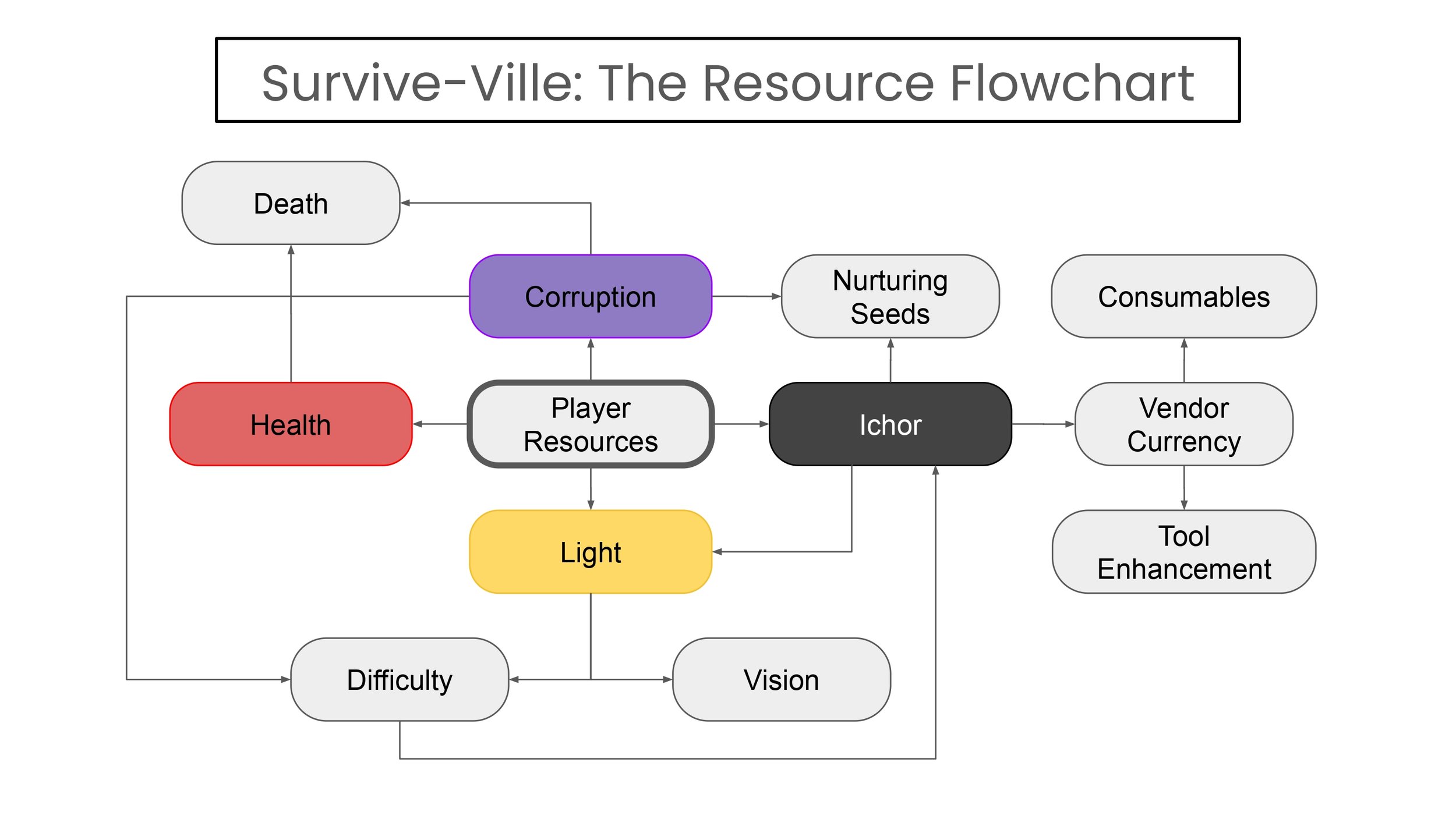Survive-Ville’s Combat
Three expansive design documents concerning the player’s combat ability and the enemies they encounter during the night.
Basic implementation of Budling enemy AI behaviors, featured by fellow designer Dylan Anderson.
Introduction
Survive-Ville is a game created by Winged Remnant. It is a town builder by day and a grueling rogue-like dungeon crawler at night. As the Combat Designer of the team, these are a handful documents I wrote as blueprints for the combat of the game: what the player is capable of and the tools at their disposal, as well as what they will be fighting in the dark depths of the corrupted forest.
These are detail-heavy design documents written with the intent of providing a springboard for other designers working on parallel systems and direction for artists and programmers. The first 3rd of each document concerns the logistics of constructing the systems required for combat. whereas the rest lists various weapons/enemies, their attributes, and their roles in the sandbox.
Weapon Design
Combat in Survive-Ville will consist of an arsenal of weapons, each serving as a unique method of combat approach. Each weapon will default to either a one handed, or two handed weapon, granting the player agency in experimenting and discovering weapons that suit a playstyle, or useful for certain enemy types.
Weapon Design Intent
Weapons in Survive-Ville should, by default behavior, be easy to understand and use. This allows other systems of the game such as enemy design, level design, and systems design to overlap neatly without much baggage to accommodate other niche exceptions or behavior. In short, the simpler the weapons, the easier it will be to create emergent and refreshing gameplay during combat.
That said, each weapon should offer a unique playstyle that demands the player approach combat in a different way. No two weapons should feel the same, and no two weapons should fill the same niche, if possible (ie: multiple ranged weapons are fine, but having them behave functionally the same is not).
Additionally, due to the design of Survive-Ville’s 2-1/1-2 loadout system, weapon design should have some innate behaviors that encourage combinations for strong synergies, whether that be overlap in their effective ranges, damage types, or engagement coverage. No weapon should feel uniquely niche to the point that its gameplay is inherently burdening with little to no synergy or advantage to its use.
Therefore, Weapons in Survive-Ville should be approached cautiously. Mindful of the greater Roguelite systems planned for the game, they should serve to compliment a Night Phase’s stacking difficulty, modifications, and other systems by being fundamentally simple, yet centric to a build and expressive to a player’s preferred playstyle.
Enemy Design
Enemies within Survive-Ville are meant to provide opposition or objective for the player during night combat. They pose as threats that force the player to engage with them in some manner. Generally, the method of engagement is determined by the player and the enemy (or combination of enemies) itself.
Enemy Design Intent
Each enemy should have a meaningful niche that makes their combat challenge unique and engaging from all other enemy types. There should be very little overlap in how different types of enemies behave or how they are approached by the player; each new enemy type (excluding variants) should force the player to adapt their method of engagement.
Additionally, the complexity of enemy combat should come from the overlap of multiple simple enemies rather than single complex enemies. Therefore, enemies should be very simple. They should engage with the player in very predictable manners with very simple to understand attacks. With the exception of Objective Enemies (Bosses and Minibosses), no enemy type should have more than two variable attacks.
The concept sketch for a Timberlimb. This sketch informed the general direction for enemy art moving forward.
Concept art of a Blossom, incorporating more fleshy tones and creepy imagery.
Player Resources
Combat during the night phase of Survive-Ville requires risks in order to be thrilling. The Resources a player must manage fill in that gap, detailing critical systems that a player must contend with in order to find success. Read more about them below, or see the flowchart for ease of reference!
An example of the Light resource and how it contributes to Vision, particularly with regard to terrain.
A flowchart detailing the relationship between different Resources the player must manage during Survive-Ville’s night phase.



